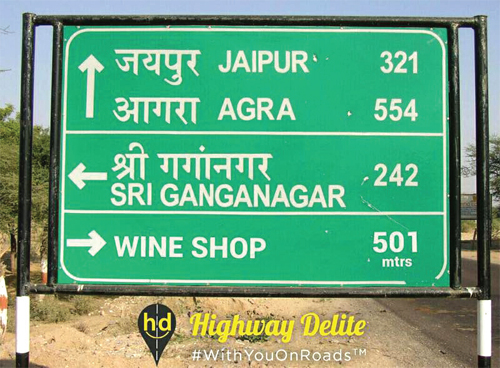27 Apr 2017 | 01:27am IST
Do people think it’s time to take the high road?
A month since the Supreme Court’s decision to ban the sale of alcohol up to 500 metres from all national and state highways, Café looks into how the issue has progressed
Fernando Monte da Silva
Much consternation has been snowballed
into effect over the Supreme Court’s decision last month, which went on to ban
the sale of alcohol up to 500 metres from all national and state highways. This
consternation has gone on to inspire all kinds of response, ranging from the
ludicrous, to the outrageous, to the humorous. The last one, especially, has
been in very strong and pulsating vein, with many people going on to suggest
that perhaps no highway should be permitted within 500 metres of a bar. One
month on since the decision, one can’t help but wonder what the current mood
and general sentiment towards the issue is.
One member of the youth, who is a
frequent party-goer, but preferred to remain unnamed given the nature of this
debate, challenged the logic behind the decision-making process. “There are so
many loopholes. Let’s present some of them right now. There are limits as to
how much alcohol can be carried in one vehicle. I believe that it is two
bottles of harder liquor and one case of beer, though I may be mistaken. What
mechanism lies in place to ensure that these aren’t being consumed in transit?
Also, if a driver wants to drink, is 500 metres really that far out of the way
to travel to ensure that one gets one’s fix? I sincerely doubt it,” he argues.
But while drinkers may be able to get
away with loopholes, establishments that are placed along the highway may not
be as fortunate.
Karlton D’Souza has been a restaurateur
par excellence for years now. One of his dreams was to take his cuisine closer
to a large chunk of his patrons, who would travel from all corners of the state
to Karlton’s signature establishment, Horizon Grill in Candolim. He has now
made this dream a reality, but it now faces a setback too. At the time of his
putting his dream into action, Porvorim seemed like a safe bet
–
close to Panjim,
bang on the highway, within reach of people both sides of the bridge and not as
far as Candolim for the southerners. What could possibly go wrong?
“Bar sales make up a massive part of the
revenue for the evening. The bar aspect of things also serves as a huge draw
for prospective diners. It may not be the be-all-and-end-all of the dining
experience, but let’s put things in perspective. Let’s say that a whole group
wants to go out to dinner. Even if one member of the group wants to drink, the
group will gravitate towards a place which serves liquor as well as food. It’s
a natural tendency. In similar vein, revenue, or for that matter, profit
margins will get affected, as bar sales make up a huge part of this,” Karlton
shares.
The understanding
of the general public is that the government will resort to these sorts of
technicalities to work around prohibition, though the Supreme Court verdict
says its decision was based on opinions made by the centre. The 500-metre
requirement, though, doesn’t seem to have any exact reasoning. Another question
being asked is why the ban applies specifically to national and state highways,
and not all roads. Either way, time continues to march on, and with it, so do
the continued problems being faced by those dependent on the industry that’s
forced to rework itself so as to adhere to the ban.

